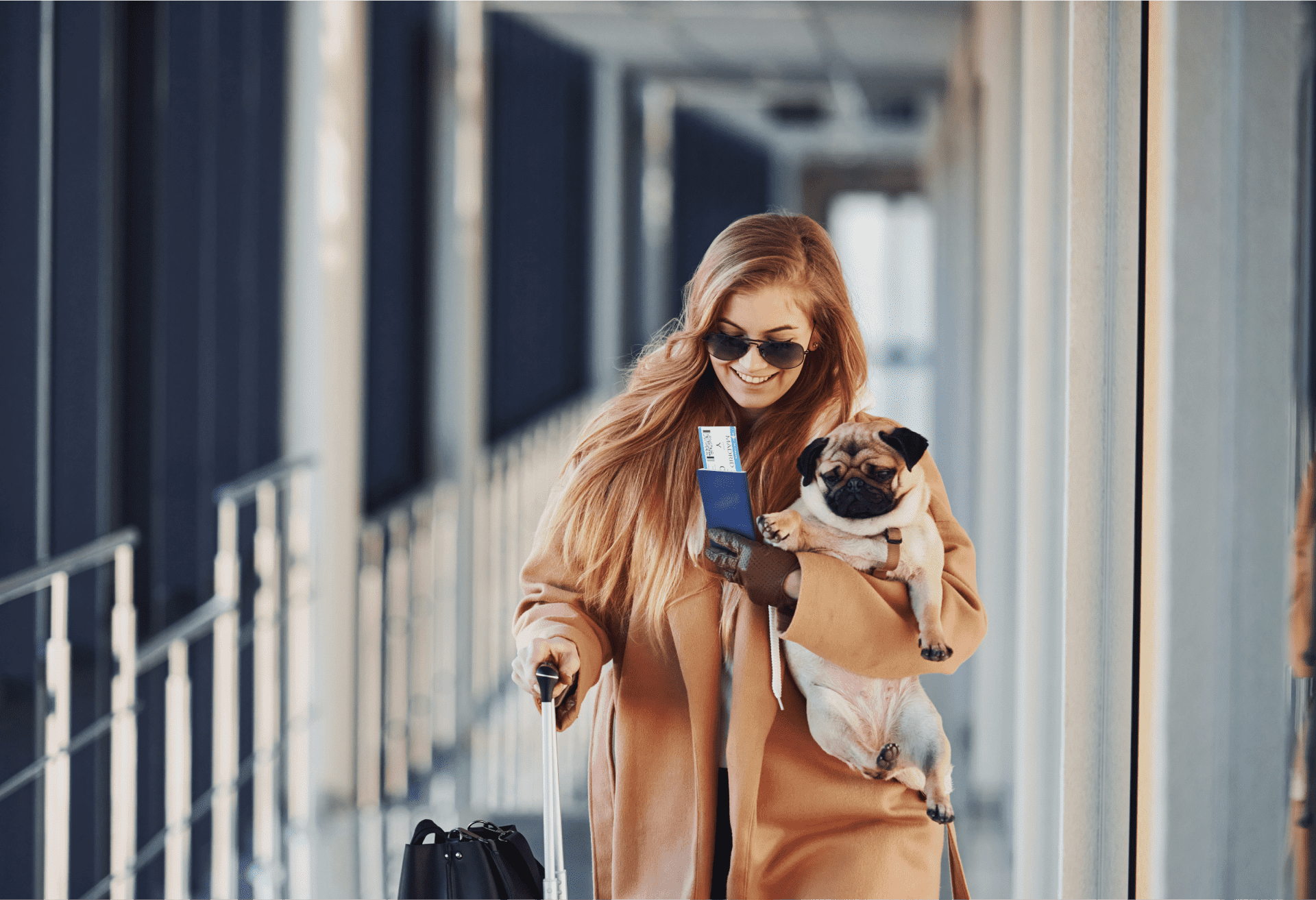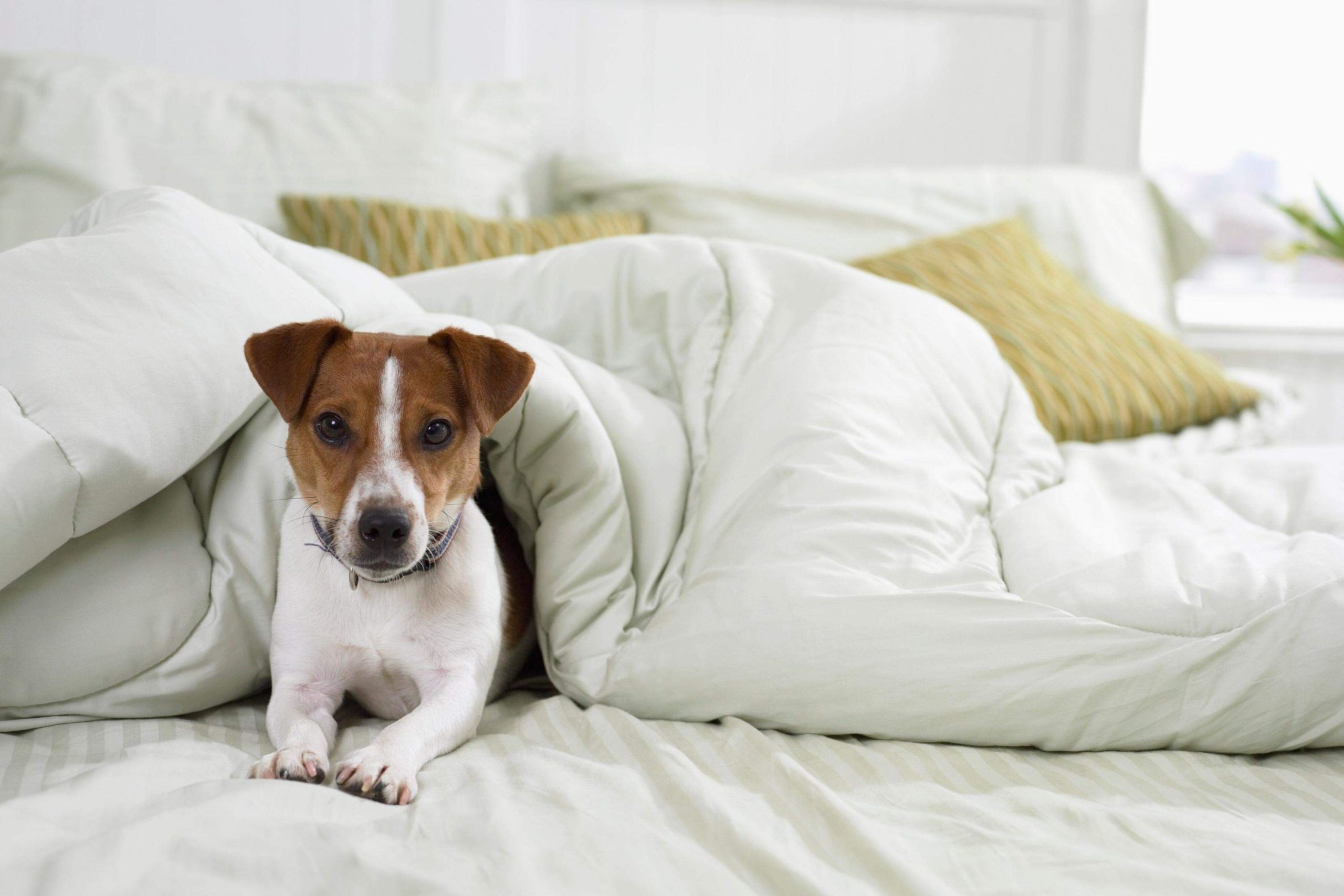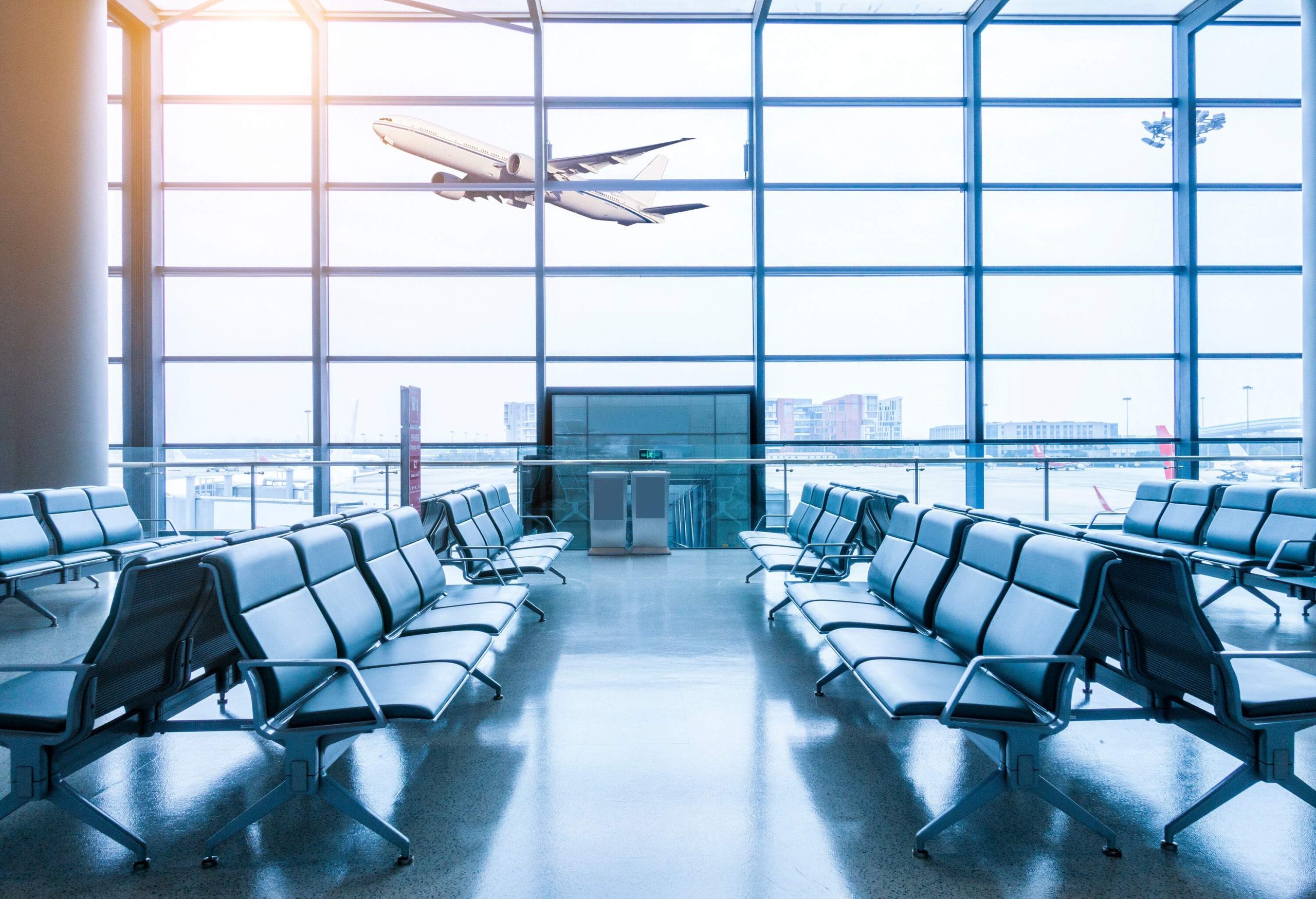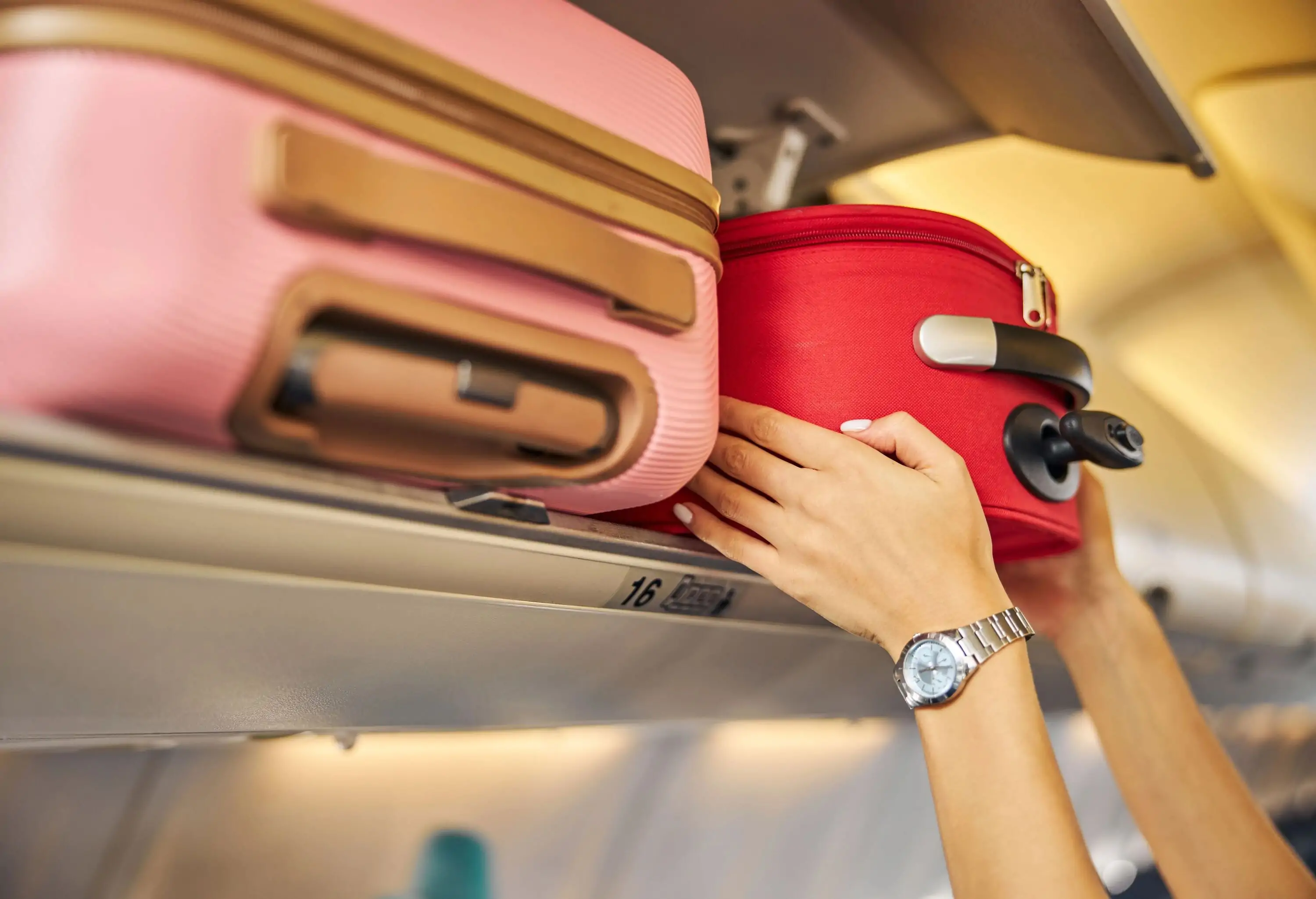How to fly with a pet and tips for a smooth flight
Flying with a pet is a bit more complicated than just adding an extra bag. It can be nerve-racking flying with your loyal companion – after all, they are precious cargo. The best way to ensure everything goes smoothly is to plan ahead and try to anticipate any potential stressors. If all goes well, neither you nor your pet will have anything to worry about.
What to know about pet policies from major airlines
People aren’t the only ones flying on airlines these days—dogs are welcome too. However, different airlines have different requirements – read below to learn more.
Delta
Delta welcomes pets to travel in the cabin. You will need to reserve your space early since they offer pet spaces on a first-come, first-serve basis. The total number of pets per flight is limited to two in first class, two in business class, and four in the main cabin.
- Flying with a pet in the cabin: Travelers are allowed to bring small pets on Delta flights. You can only fly with your dog if they are at least 16 weeks old and comfortably fits in their carrier. You are also allowed two pets of the same breed and size pet carrier. The fee for flying with your dog in cabin for flights throughout the US is $95 each way. For international flights, the fee is $200 each way.
- Flying with a pet as cargo: Delta Cargo has placed a temporary embargo on pet shipments globally effective April 1, 2020. An exception is made for Active US Military or Foreign Service Officers traveling with permanent change of station orders.
United Airlines
United Airlines welcomes pets to fly with their pet owners in the cabin. United Airlines will only accept two dogs in the cabin, and it’s best to reserve a space for your dog as soon as you confirm your travel plans. They accept reservations up to 30 days in advance and no later than five days before departure for travelers flying with their dogs or pets traveling alone.
- Flying with a pet in the cabin: Travelers are allowed to bring small pets in the cabin. Your dog must be crated throughout the flight, and the crate must fit underneath the seat in front of you. All pets traveling in cabin must have a pet tag attached to the carrier, which you will get from an agent at check-in. Only one adult dog is allowed per carrier, and the fee for flying with a dog is around $125 each way.
- Flying with a pet in cargo: United no longer allows pets to fly in cargo. Members of the U.S. Military on current Permanent Change of Station orders, and State Department Foreign Service Personnel on current reassignment are permitted to transport their personal pets (dogs and cats only) as checked baggage on flights between Guam and Honolulu under specific conditions.
American Airlines
Your dog is welcome to fly with American Airlines in the cabin. Only seven dogs are allowed on American Airlines flights and five on American Eagle flights. If you plan to fly with your dog, contact the airline as soon as you confirm your travel plans to help guarantee your dog a spot.
- Flying with a pet in the cabin: Both cats and dogs are allowed to fly with American Airlines, provided the combined weight of the pet and the carrier doesn’t exceed 20 pounds. The pet must remain in their carrier for the entire flight, and the carrier should fit under the seat in front of you. The fee for flying with your cat or dog on American Airlines is a$125 per kennel each way.
- Flying with a pet in cargo: American Airlines only accepts checked pets for active-duty U.S. military and U.S. State Department Foreign Service personnel traveling on official orders.
Southwest Airlines
Southwest Airlines welcomes small dogs to travel in their cabins only. Only six pets are allowed on a flight, and spots are offered on a first-come, first-served basis. To help guarantee a spot for your dog, make your pet reservations as soon as you confirm your travel plans. Southwest Airlines does not allow dogs flying unaccompanied or dogs flying with an unaccompanied minor.
- Flying with a pet in the cabin: Small pets are welcome in the cabin on domestic flights, but you will be limited to one pet carrier per flight. Your carrier needs to fit under the seat in front of you, and it is considered carry-on luggage. You can fit two pets in one carrier, as long as they are of the same species. Additionally, the airline doesn’t require any pet documentation for pets to be allowed on board. The fee for flying with your pet in the cabin is $95 each way per carrier.
JetBlue
JetBlue welcomes small pets in their cabins on some flights. Planes are limited to four pets per flight, so it is crucial to reserve your spot as early as possible. Each traveler will be limited to one pet, but exceptions can be made in some cases.
- Flying with a pet in the cabin: JetBlue welcomes small cats and dogs to fly in-cabin with their human companions on domestic and international flights. Your pet will need to remain in their carrier, which must fit under the seat in front of you for the entire flight. The combined weight of the pet and carrier must not exceed 20 pounds, and the fee for flying with your pet is $125 each way.
Hawaiian Airlines
Hawaiian Airlines allows small pets to travel in the cabin or the hold, while bigger pets can travel as cargo. Both cats and dogs are welcome to fly with Hawaiian Airlines. There’s a limit to the number of pets allowed on a flight, and you need to reserve your spot early. In cases of extreme temperatures, the airline has the right to restrict the transportation of your pet in the cargo hold.
- Flying with a pet in the cabin: Hawaiian Airlines welcomes small cats and dogs to fly with their owners in the cabin as long as they’re crated. The combined weight of the pet and crate should not exceed 25 pounds and the carrier must fit under the seat in front of you. Each traveler can bring only one carrier onboard, and only one pet is permitted per carrier. The only exception is for two puppies or kittens from the same litter or breed. Flying with your pet will cost you $125 each way if traveling between Hawaii and North America, $35 each way if traveling within the state of Hawaii.
- Flying with a pet as checked baggage: The airline welcomes cats, dogs and household birds to fly as checked baggage, as long as the combined weight of the pet and carrier doesn’t exceed 70 pounds. If the combined weight is in excess of 70 pounds, your pet may be transported via the cargo department. Only one pet is allowed in each carrier with the exception of two puppies or kittens from the same litter or breed. Flying with your pet as checked luggage will cost you $225 each way.
What to consider before flying with a pet in-cabin
Picture flying from your pet’s perspective – the unfamiliar sights, sounds and smells can be very scary. Even worse, they’ll spend the whole flight in a crate underneath the seat in front of you with no view. However, getting to your destination can be more comfortable if you follow these tips.
Visit the vet
We recommend talking to your vet about your pet’s health before flying with them. Discuss any concerns that may arise with air travel, and if your vet gives the all-clear, reserve a spot for your pet.
Reserve a spot early
As mentioned above, most airlines only allow a limited number of pets on their flights. You’ll need to reserve your spot early to guarantee your pet a spot on the plane.
Fly nonstop
If possible, book a direct flight, and try flying during the week when airports are less busy. This reduces the amount of time to reach your destination allowing your pet out of their crate sooner.
Get a carrier
Most airlines only allow pets to fly in the cabin in their carriers. Check the airline’s carrier size restrictions to know which type will fit under the seat and still have enough space for your cat or dog to move freely.
Crate train your pet
Flying is already a stressful situation for your fur baby, and this will only worsen if they associate their crate with a scary place. You’ll need to crate train your pet early enough so that they associate their crate with a safe space.
Tips for traveling with pets through airports
Successfully navigating the airport is a big part of flying with your pet. If it’s the first time flying with your pet or you are looking for a smoother experience, here are some tips for traveling with your furry best friend through the airport.
Prep the carrier and get them ready for downtime
If it’s not already lined, place a liner or absorbent pad at the bottom of the carrier. Pack some food and water for your pet and make sure to pack extra in case of delays. Also, try to play with your pet and give them lots of attention before heading to the airport to help reduce the nervous energy they might experience while traveling.
Arrive early with a plan
We recommend arriving at least two hours before your flight. This will give your pet just enough time to drop the nervous feelings and adjust to the new environment. You’ll also want to have a plan in case of delays. Where will you take your dog for walks? Where are the pet relief areas? It’s better to figure out these scenarios ahead of your flight.
Remember to check in with the airline
It doesn’t matter if you checked in online – you will need to check in at the airline counter if you’re flying with a pet. Your airline should be aware of your pet from the reservation, but you will want to double-check this and get crucial information like the location of pet relief areas and your gate assignment.
Familiarize yourself with the rules for pets in airports
The FAA requires you to have your pet in its carrier as you travel through the airport. This rule has two exceptions: When passing through the metal detector and when accessing the pet relief areas. Other than that, your pet should stay put in their carrier.
Think through your arrival
You will also need a plan for when you arrive at your destination airport. Try to look up where the pet relief areas are ahead of time and organize pet-friendly transportation from the airport.





